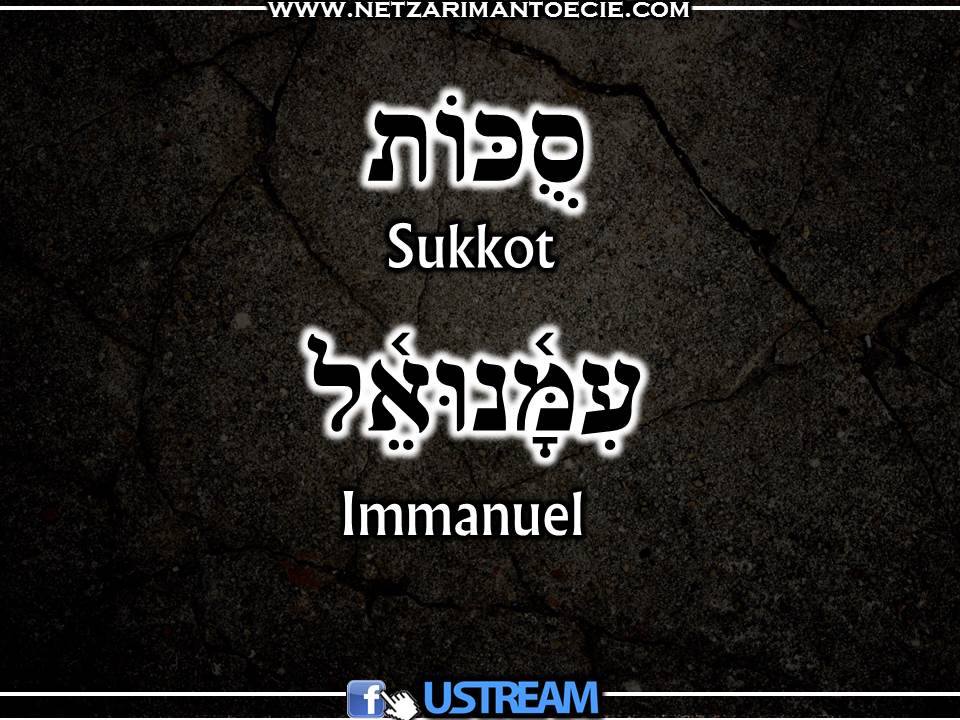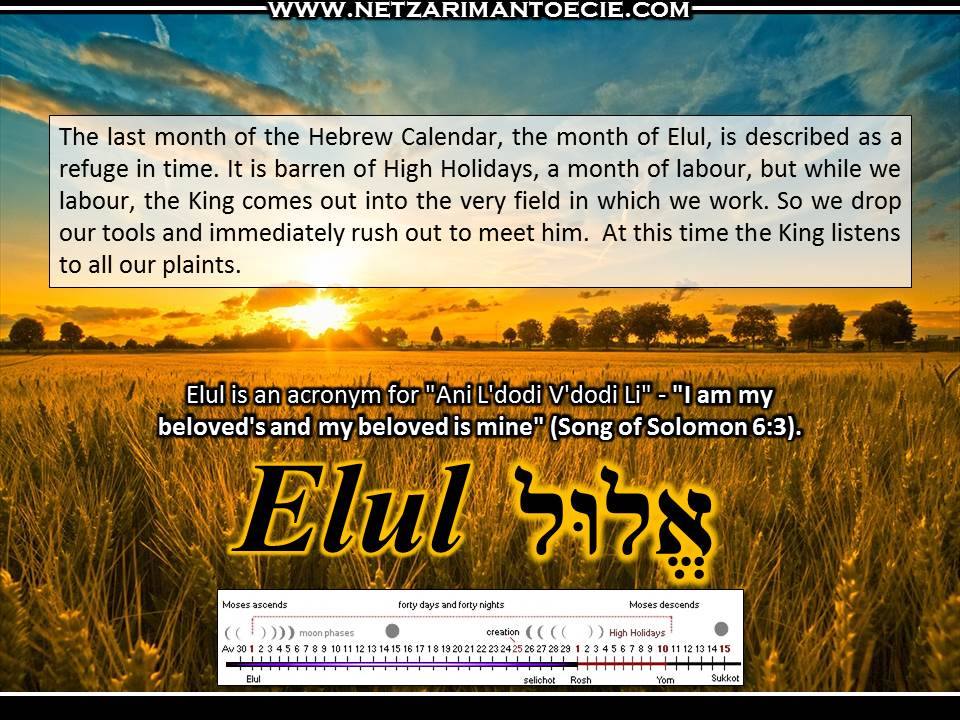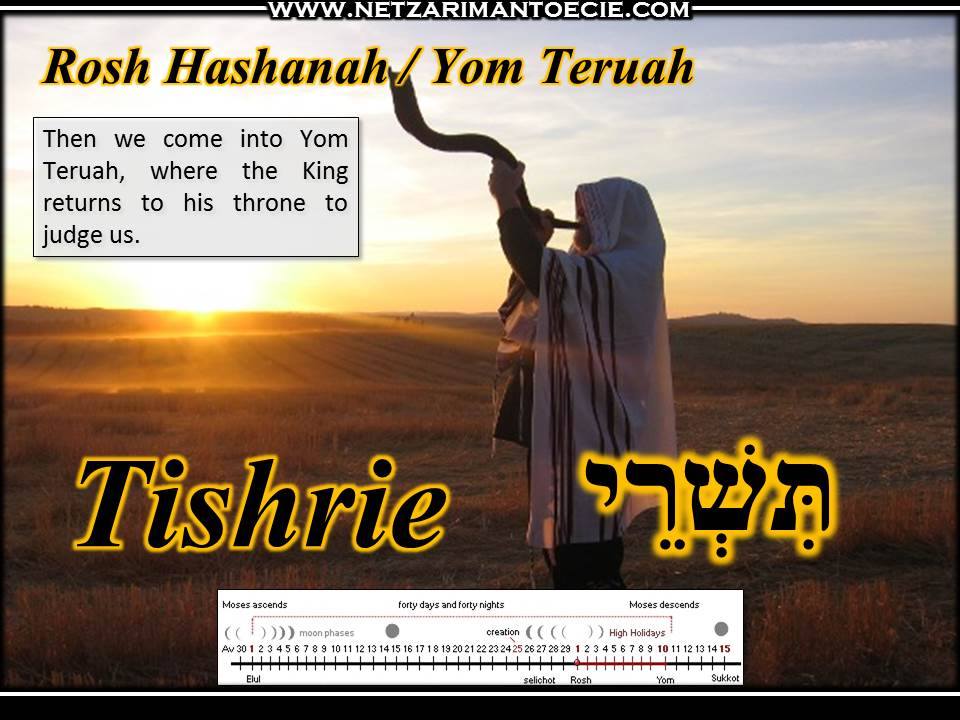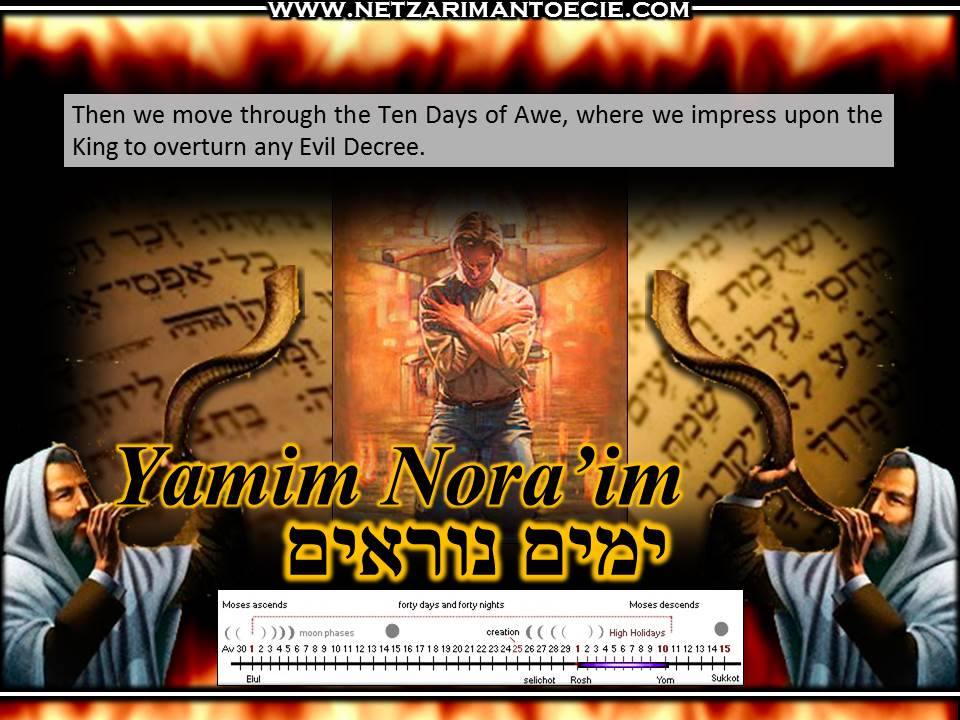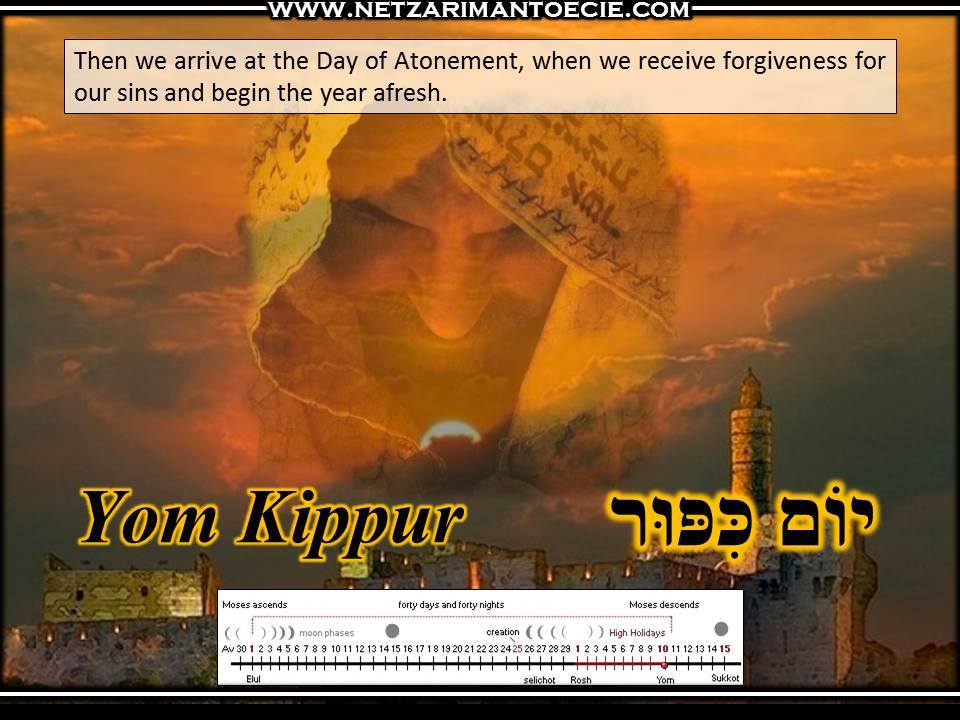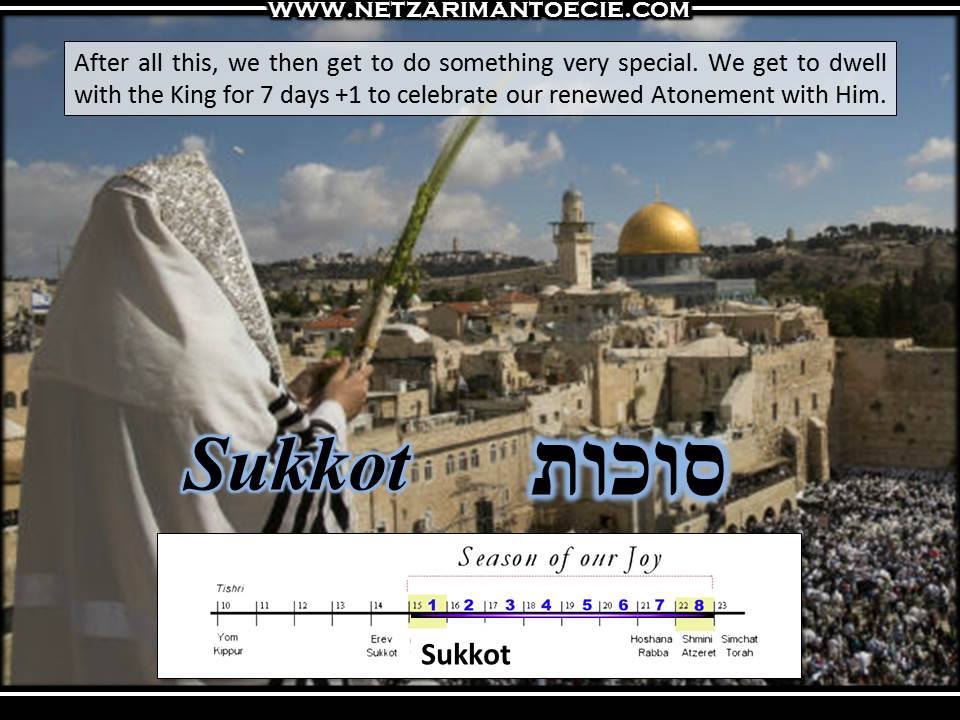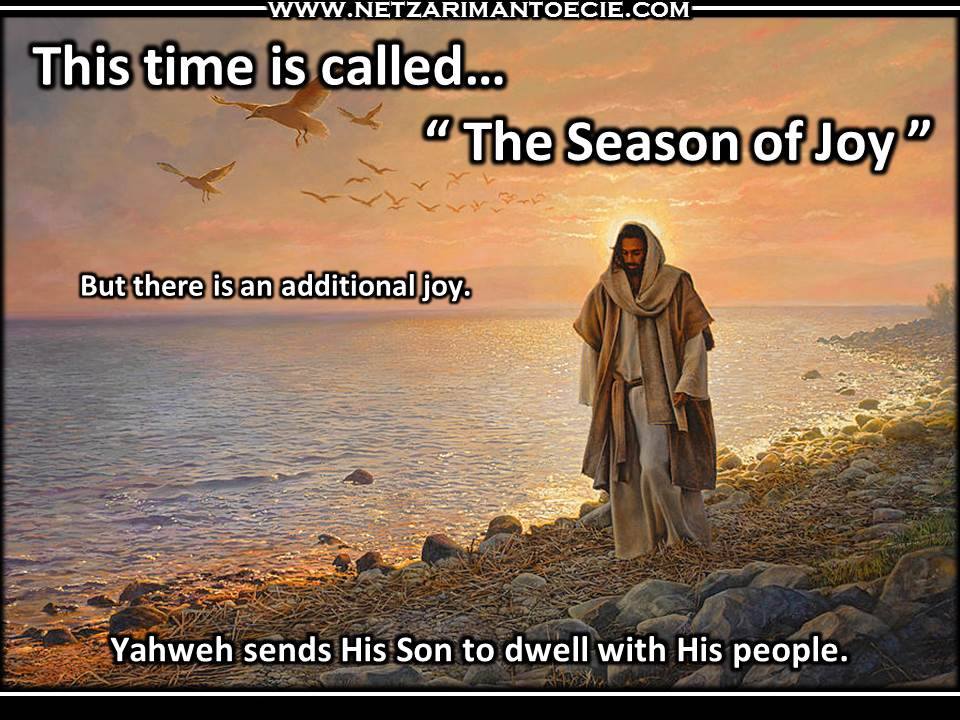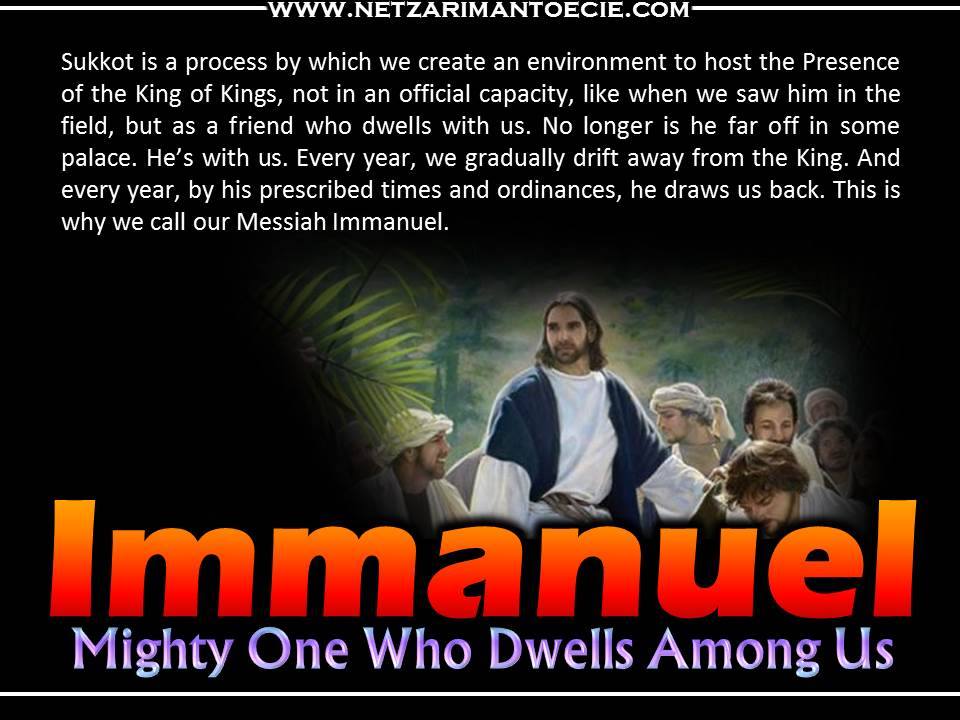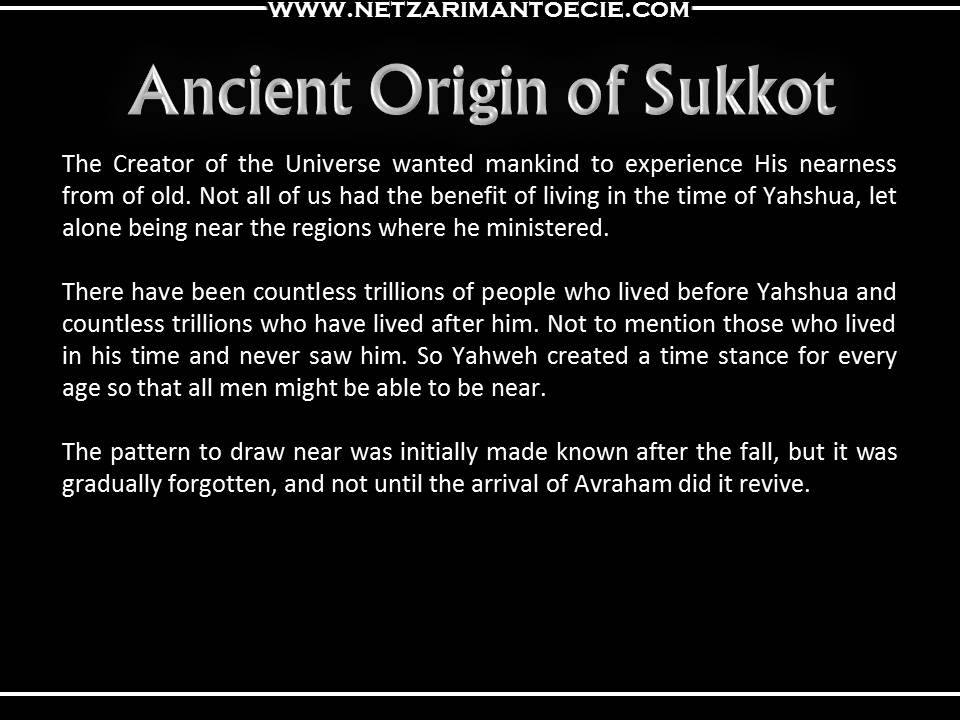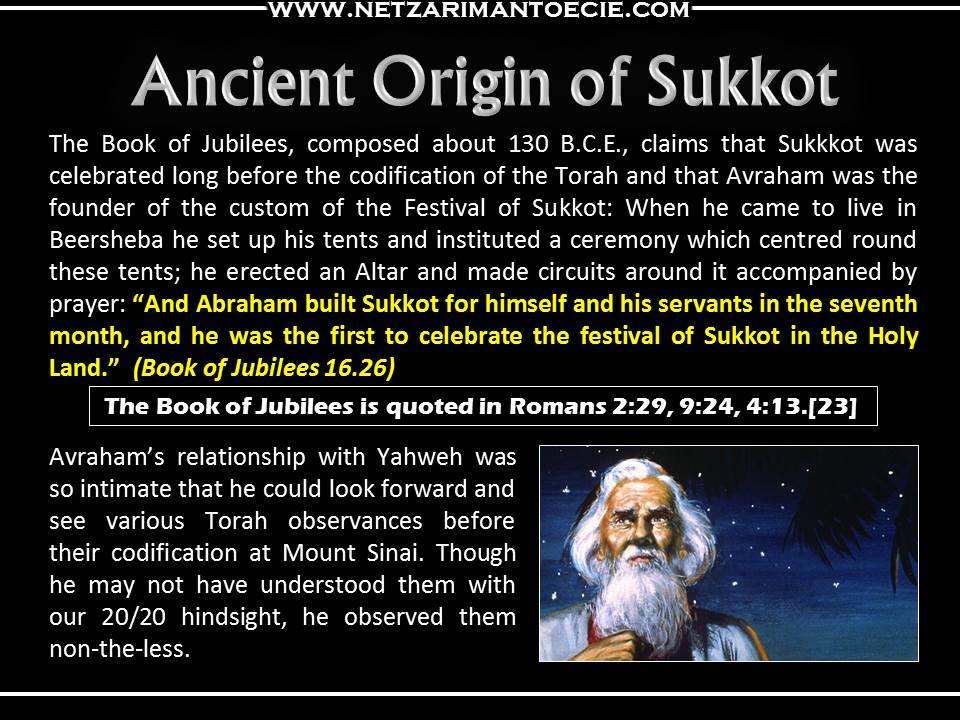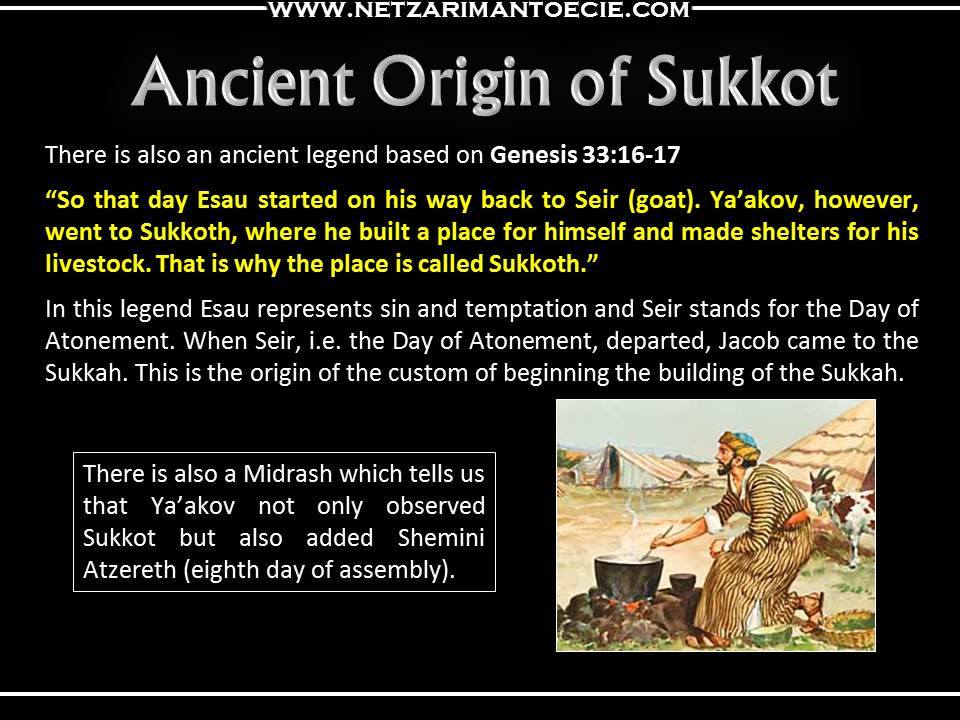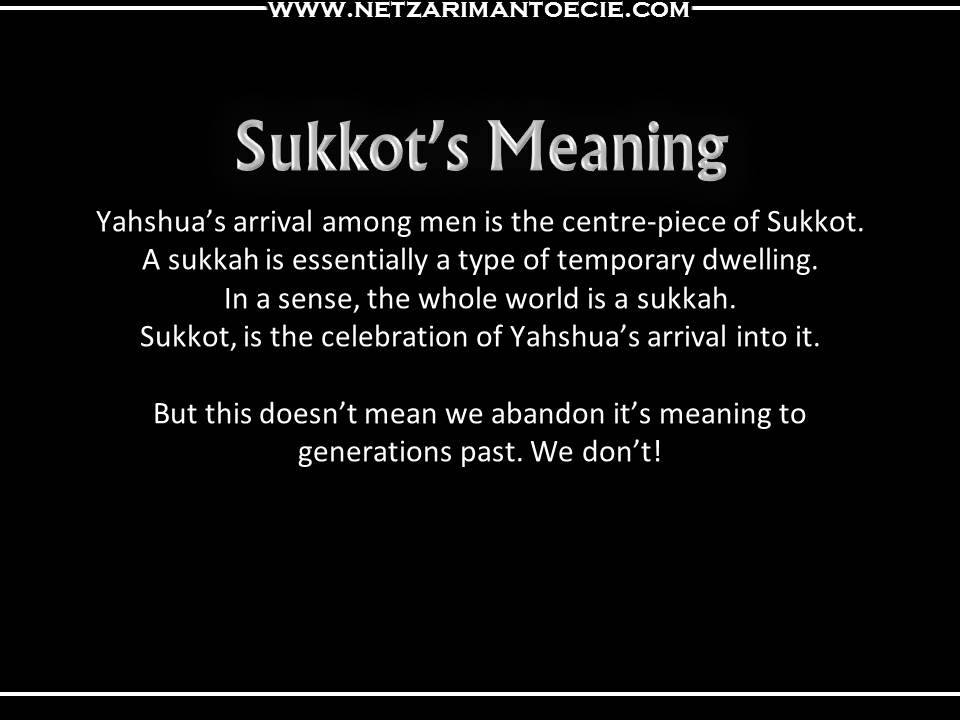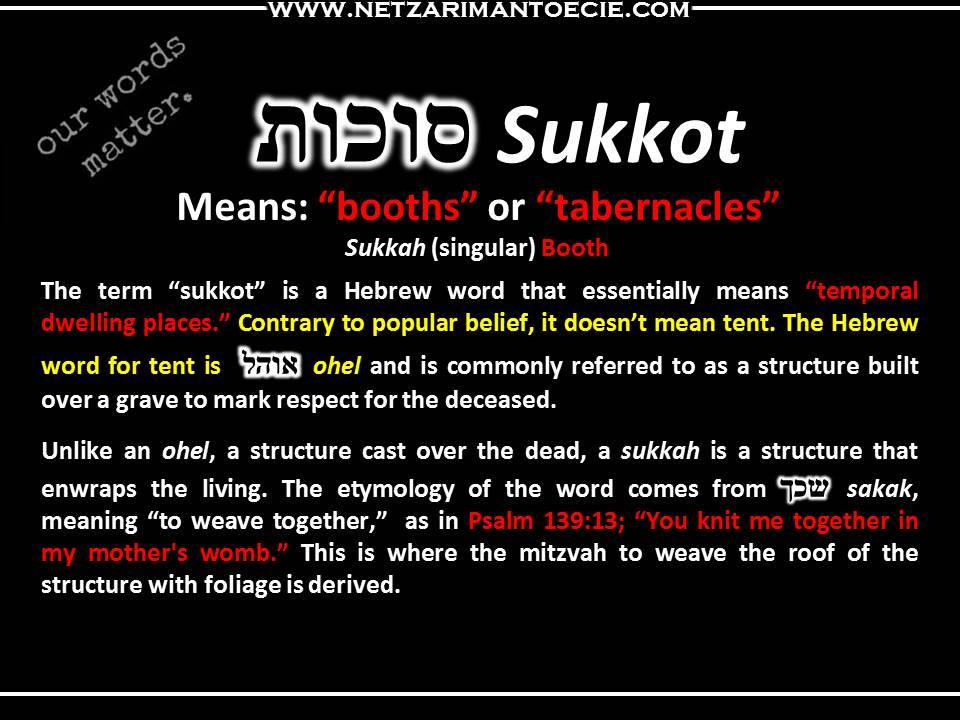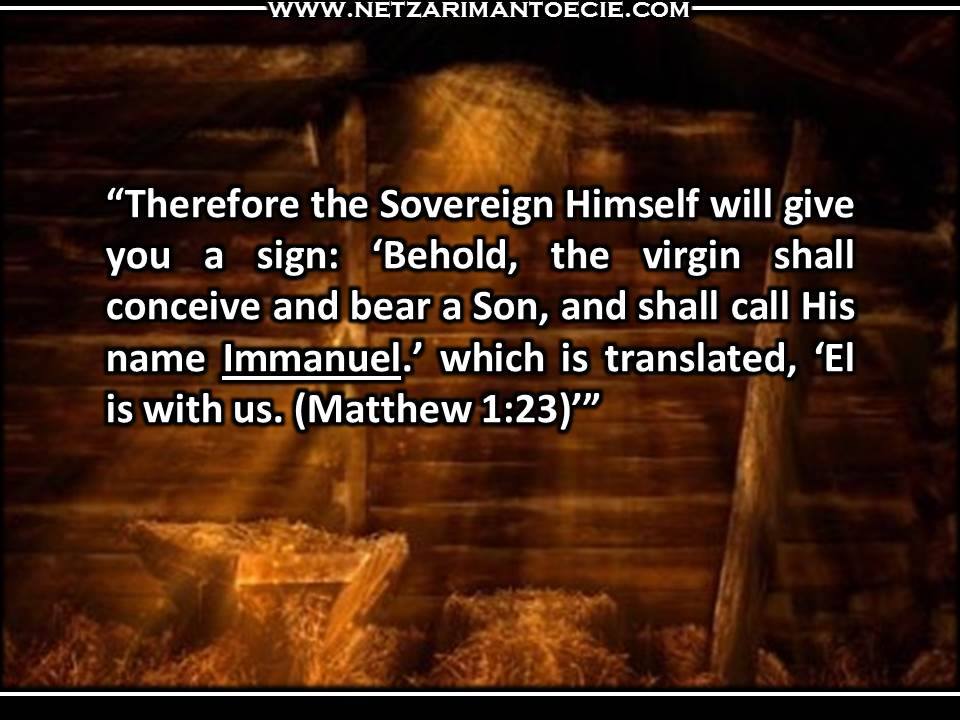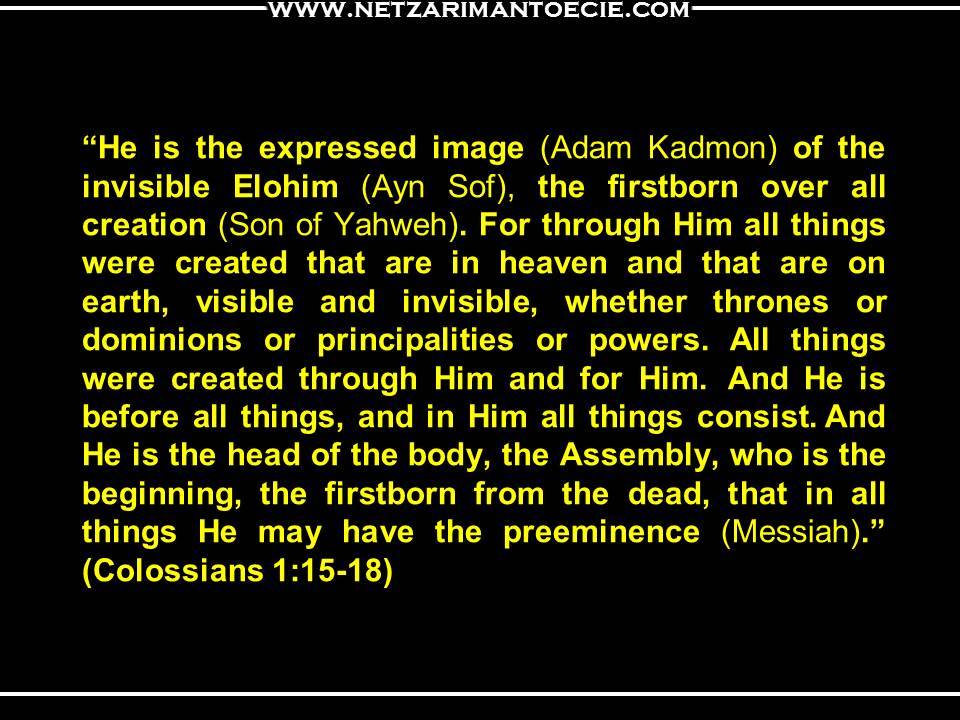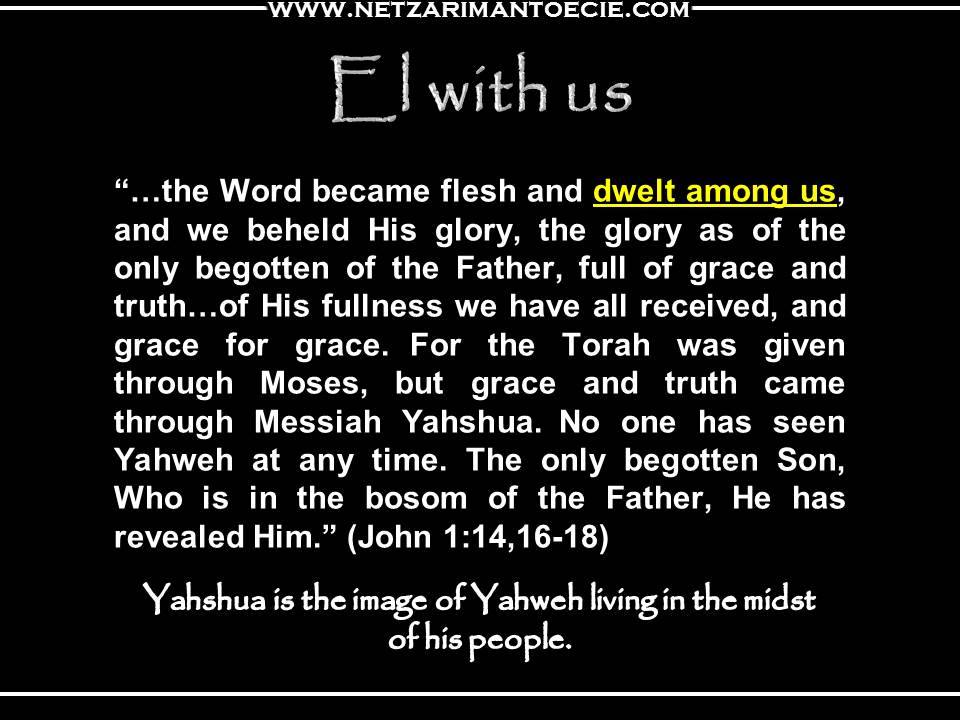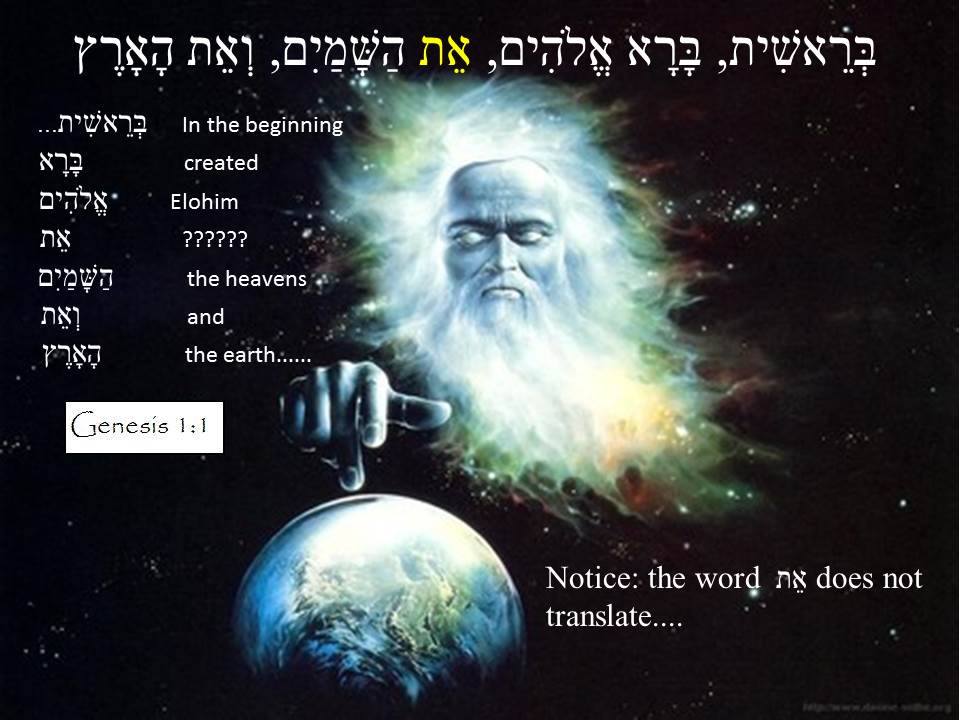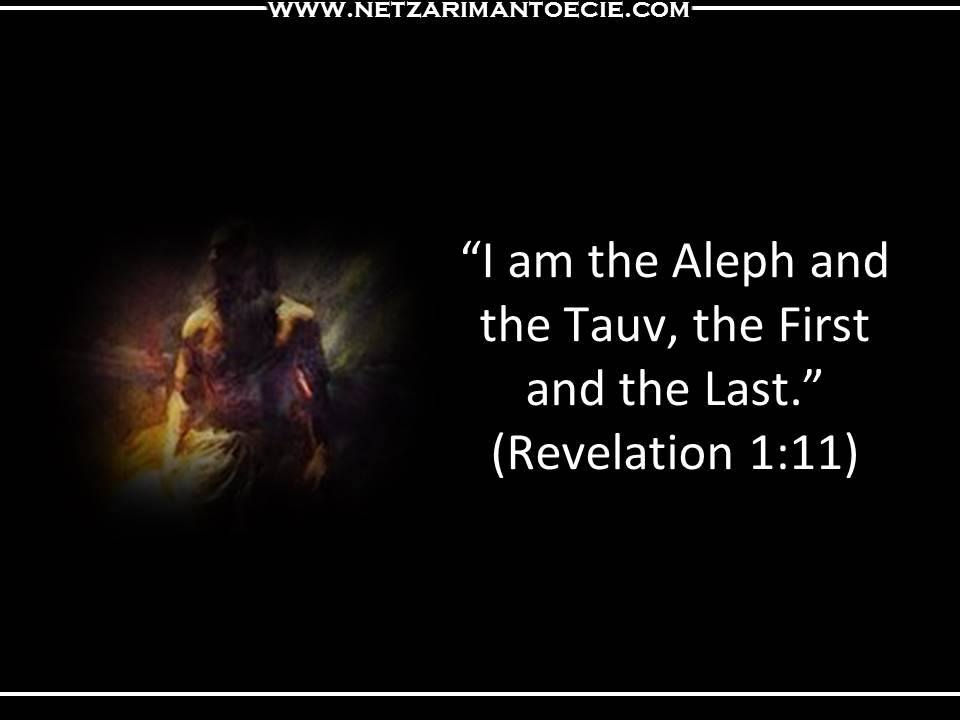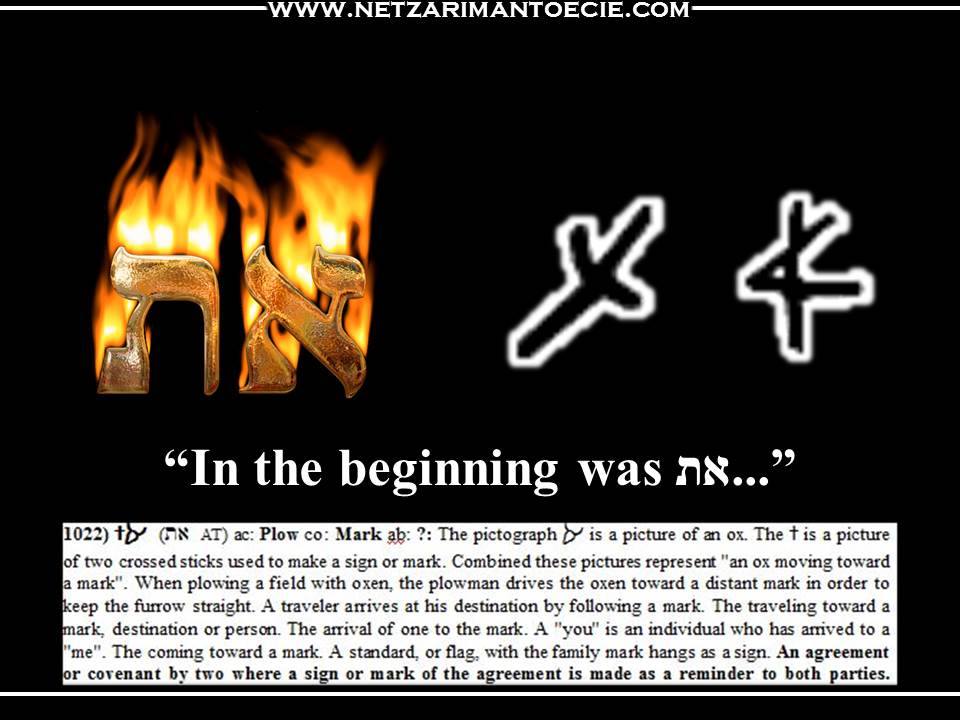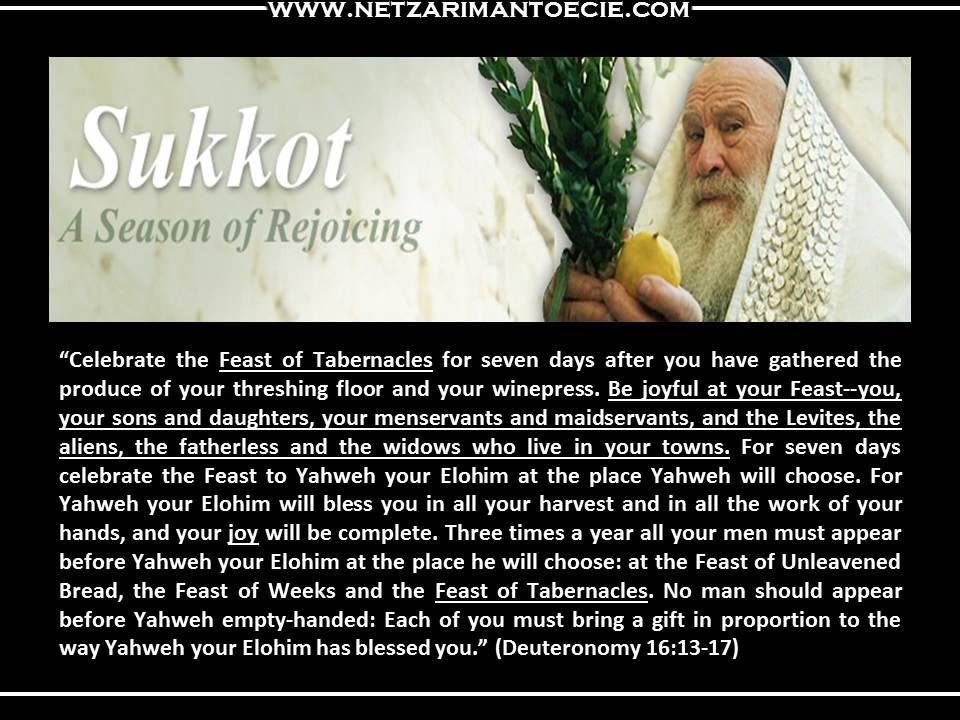Video Teaching
NOTE: Due to internet restrictions from moving homes, soon we will upload full version of this teaching that will not have segments in the near future.
Thanking you Netzarim.
Segment 1
Segment 2
Segment 3
Segment 4
Audio Teaching (Downloadable)
Study Notes and Slides
Halloween - Reckoning the Season
Halloween has taken Australia by storm. Walk into a popular shopping centre and you are assaulted by an overwhelming array of Halloween merchandise in the form of witches, monsters, and all sorts of spooky paraphernalia. Oh that one of the Hebrew holidays would receive such a revival in this dry and barren land!
But let’s be perfectly honest here. The human psyche is geared to like a good story and the more thrills and spills it has, the more it captivates our imaginations. Scripture alone attests to this, being filled with harrowing tales, often not ended well.
Before we examine Halloween, let’s clear a few things up regarding the natural human need to experience fear. Why do people chase fear and is it healthy?
The answer is yes, human beings have an in-built desire to fear. Fear preserves life; it’s the thing that stops us from jumping off a cliff, speaking inappropriately or even assaulting someone.
Every good fair has a haunted house attraction. Why? Because being scared exhilarates people and reminds them that life is good. That’s why for the first five minutes after riding a roller-coaster, everyone is jumping up and down like chickens and then they gradually calm down and return to normal.
Fear enables a believer to calculate their true spiritual standing before the Almighty, causing them to avoid being conceited, puffed-up or narcissistic. Fear switches on every awareness button you have. (Slide) “Therefore, my dear friends, as you have always obeyed--not only in my presence, but now much more in my absence--continue to work out your salvation with fear and trembling.” (Philippians 2:12)
“I will tell you, my friends, do not be afraid of those who kill the body and after that can do no more. But I will show you whom you should fear: Fear Him who, after the killing of the body, has power to throw you into Gehenna.” (Luke 12:4-5)
“Whoever fears Yahweh has a secure fortress, and for their children it will be a refuge.” (Proverbs 14:26)
“He will bless those who fear Yahweh-- small and great alike.” (Psalm 115:13)
“The Spirit of Yahweh will rest on him-- the Spirit of wisdom and of understanding, the Spirit of counsel and of might, the Spirit of the knowledge and fear of Yahweh—and he will delight in the fear of Yahweh.” (Isaiah 11:2-3a)
“The fear of Yahweh is the beginning of wisdom; all who follow his precepts have good understanding. To him belongs eternal praise.” (Proverbs 111:10)
The Torah accords great value in the proper application of fear. In Hebrew, fear is called yirah and contains the root raah, which means “to see.” In other words, to truly fear, is to truly see.
There is another type of fear called pachad, which means “dread.” This is an irrational or overreacted fear. This type of fear is uncomfortable and threatening. We are to practice yirah, not pachad. Fear of heaven should be a constant mitzvah. “…continue to work out your salvation with fear and trembling.” (Philippians 2:12b)
Yirah is not paralyzing or debilitating. On the contrary, it can generate super-human feats. Facing fear is empowering. It gives you the strength you never knew you had. It’s the reason why a mother can lift a car off her trapped child.
The enemy knows that fear is a virtue, so it seeks man’s use of it in relation to the Sitra Achura (the side of impurity), rather than on the Sitra D'Kedushah (the side of holiness). The name of the game is to get you to fear HaSatan, rather than HaShem.
The Talmud says: "Everything is in the hands of heaven – except for fear of Elohim." Fear of Elohim is completely up to us. If you want it, you've got it. This is the essence of free will.
The fear of Yahweh carries everything else.
When a person dies, he is summoned for judgment to the heavenly court, where he is asked the following questions:
- Were you honest in business?
- Did you have a set time for learning every day?
- Did you try to have children?
- Did you yearn for the redemption?
- Did you pursue wisdom and understanding?
Let's say you answer "yes" to everything. You did it all correct. But there's one last question:
- Did you have fear of Elohim?
If not, says the Talmud, you'd be better off having done nothing at all. Fear of Elohim is a deal-breaker.
Why is that? Fearing Yahweh is your "preservative." It keeps your Torah fresh. Torah without fear of Elohim, is like storing wheat without a preservative. The wheat rots.
But in one John we have what appears to be a contradiction. “There is no fear in love. But perfect love drives out fear, because fear has to do with punishment. The one who fears is not made perfect in love.” (1 John 4:18)
The Greek word here is φόβος (phobos) and it means dread or extreme terror. In other words, ‘There is no terror that should be derived from circumstances when one is in love with Yahweh. Love of Yahweh drives out all fear of any earthly situation, even physical punishment. The one who still fears what the earth can muster to terrorize him, is not yet perfected in Messiah’s love.’
The fear of Elohim is as much a Netzarim Ketuvim teaching as it is a teaching throughout the TaNaK. “Show proper respect to everyone, love the family of believers, fear Elohim, honour the emperor.” (1 Peter 2:17)
You might have thought you’d just be getting dirt on Halloween, but the word says, “be wise to what is good and innocent to what is evil.” (Romans 16:19) But, we get more better results if we say why we shouldn’t partake in something, rather than just say we shouldn’t partake in something.
The backdrop of Halloween is the horror movie. All over America horror movie marathons play around the clock over October 31st. Growing up I always had a love of these types of films. There was something about the journey, normality being impacted upon by a terrifying experience, and through the ordeal, the heroes fend off the forces of evil until victory prevails. Only problem is, they don’t make movies with endings like this much anymore. All the recent Paranormal Activity films portray a family being attacked by some evil spirit with no right of reply and by the time they fathom any notion of what’s going on, they’re all either dead or permanently insane. In the late nineteen-eighties the slasher films started bringing back the slasher, literally resurrecting them at the beginning of each new film until the sequels reached into double figures, with the audience beginning to root for the killer. I began to notice that there is a marked difference between a good scare and blood lust.
Horror, the supernatural and all things that go bump in the night, are big business.
Once a year, Halloween is the reason for the season of dressing up in fantasy costumes, decorating homes with spooky objects, participating in the door-to-door trick-or-treat custom and even bobbing for apples at some horror themed party somewhere.
Few people disagree that Halloween is a pagan holiday. In fact, most people don’t care where a holiday has come from, whether from the Bible or through some cultural or family tradition handed down. You can post your Christmas is pagan banners till the cows come home, but the bottom line is that most people just care whether it equates to a few days off, or if it’s fun to celebrate. (Slide) Dressing up in a fancy-dress costume, going to a party, bobbing for apples and watching scary films is fun. People wouldn’t do it if it wasn’t fun.
I’ve always said that Halloween is my favourite pagan holiday, because it’s the most honest. Yet, this is not entirely the case as the truth has never been the enemy’s strong suite.
Know this, above all else. The dark forces, that is the negative powers that lure a man to do something destructive, can never present themselves in their own natural garb. Never ever! Their own garb would be the end result or outcome of whatever a person chooses to do that is evil. This can never be part of its advertising campaign. The Sitre Achurah needs its own window dressing, that is, people who are wrapped up in it that appear happy and prosperous. Its false-holiday system is meant to recruit and distract through the use of spectacle and entertainment. The distraction is to smother the Hebrew High Holidays that uncannily seem to have a corresponding pagan holiday slated next to each one.
It’s true that Christmas, Easter, Valentine’s Day and Halloween have sinister origins. This means that at their outset, there were dark meanings and practices infused into their very conception. Now most people, say they are fine to practice now as all their harmful elements have been removed. They’ve been sanitised and suitable for use without any harmful effects. This means there has been a removal of any component that carried any type of harmful effects – including death.
While the barbarous nature of the ancient world might seem to have been left well behind, the enactments remain somewhat intact, so much so that their execution is surprisingly the same albeit without the immediate consequences.
The game is simple, acquire the same amount of pagan bloodletting and ritual ceremony that ancient societies once practiced, but be creative about it, so no-one notices. Sounds hard to achieve? Not really.
In ancient Britain and Ireland at around October 31st, the time when summer was drawing to a close, there was a Celtic Festival called Samhain. Samhain was known as the annual festival of the Dead. The name means "Summer's End" and pronounced saah-win or saa-ween, Samhain is a celebration of the end of the harvest and the start of the coldest half of the year. For many practitioners, it was regarded as the beginning of the spiritual new year.
Originally Halloween, a contraction of “All Hallows Eve” was called Samhain (pronounced /ˈsɑːwɪn/ SAH-win or /ˈsaʊ.ɪn/ SOW-in) and is a Gaelic festival marking the end of the harvest season and the beginning of winter or the "darker half" of the year.
Historically, it was widely observed throughout Ireland, Scotland and the Isle of Man. Samhain is believed to have Celtic pagan origins and there is evidence it has been an important date since ancient times.
In the 9th century CE, Western Christianity shifted the date of All Saints Day to 1 November, while 2 November later became All Souls Day. Over time, Samhain and All Saints'/All Souls‘ merged to create the modern Halloween. Historians have used the name 'Samhain' to refer to Gaelic 'Halloween' customs up until the 19th century.
Some facts about the original practices of Samhain A.K.A. Halloween are as follows:
First-born sacrifices are mentioned in a poem in the Dindshenchas, which records that children were sacrificed each Samhain . . . (Rogers, Nicholas. Halloween: From Pagan Ritual to Party Night, p. 17)
Halloween. That was the eve of Samhain . . . firstborn children were sacrificed. . . Samhain eve was a night of dread and danger. (National Geographic. May 1977, pp. 625-626)
The Druids would drink their victim’s blood and eat their flesh.
They [Druids] sacrificed victims by shooting them with arrows, impaling them on stakes, stabbing them, slitting their throats over cauldrons (and then drinking the blood). . . (Guiley, Rosemary Ellen. Harper’s Encyclopedia of Mystical & Paranormal Experience, p. 167)
Therefore we cannot too highly appreciate our debt to the Romans for having put an end to this monstrous cult, whereby to murder a man was an act of the greatest devoutness, and to eat his flesh most beneficial. (Pliny, Natural History, xxx, 13)
The Druids "counted it an honourable thing" to eat their father’s flesh and perform incest with their mothers and sisters.
. . . since they are man-eaters as well as heavy eaters, and since, further, they count it an honourable thing, when their fathers die, to devour them, and openly to have intercourse, not only with the other women, but also with their mothers and sisters;. . . (Strabo, Geography)
As one of the customs, druids would visit homes to acquire offerings to appease the spirits of the dead, who were said to be able to cause mischief upon the living and bring about a harsh winter. If no offerings were presented, a child of the home was taken by force as the offering and burned atop one of many bonfires (bone fires). The word “bone fire” earnt its name due to the bones of sacrificial victims being all that usually remained after the pyre burnt out.
One thing that should strike fear into the heart of a modern day, seemingly rational 21st century person, is the yearly death rate of aborted foetuses as opposed to the kill rate of sacrificed infants in all known pagan societies of the past. The current global 1st world society leads the way in the sheer volume of yearly disposed of human beings beyond any previous people, no matter how barbaric that has ever previously existed. We kill more people than the Inca’s ever did in a given year. Sure, it isn’t atop a temple with a crude cutting implement that is brought down to sever a head in the midst of a religious ritual, but our deaths are more clinical, more behind-the-scenes. Furthermore, our deaths are usually for reasons like a desire to not lose a girlish figure or because of the impact a baby might have upon comfortable lifestyle. In contrast, the death of an infant by a pagan society was looked upon as a mighty gift to a deity, a true sacrifice, that is the giving of the most valuable thing a person can imagine, their very own child. As misguided as such an act would be, the motive is far more anchored in truth and reality, than the most common motive for aborting a child today. What is the most common reason? Well most papers and articles say it’s because of a perceived inability to support the child, this is despite many would-be mums and dads living in societies that provide every assistance at every phase of a child’s birth and development. But the truth is, if you are able to read between the lines of many politically correct papers, is that abortion is most commonly opted for after birth control measures have failed. Usually, and I stress “usually,” a baby has every reason not to live by a person because it will in some way burden another’s existence. So the most common reason we kill now is usually because we see no positive merit in something that pagans believed had the most supreme value – hence their offering up of them to idols. So which society is more barbaric and twisted?
If you’re interested in seeing some facts and figures on abortion rates, hop onto the US Abortion Clock @ http://www.numberofabortions.com/ This shows the daily count and you’ll notice the clock ticking over while you’re on the site live – creepy.
The jack-o’-lantern is very much the symbol of Halloween and yet many historians are baffled as to its true origin. The best you’ll get is some cute story about a guy named jack who tricked the devil into being denied his soul. In actuality it is a reference to Druidic practice of displaying the severed heads of their sacrifices. The Druids rightly believed that the skull houses the soul and they believed by exhibiting them as ornaments rather than burying them, it would ward of any attacks by vengeful spirits.
The hollowed out pumpkin perfectly reflects this original practice with the light of the candle inside representing the light of the soul.
Trophy, charm, or ornament, the human head figured prominently in Celtic life. Warriors hung enemy heads on their houses as a show of prowess, and Druids, believing that the head harboured the soul, placed skulls in sanctuaries to ward off evil. (National Geographic, May 1977, p. 603). . . they hang the heads of their enemies from the necks of their horses, and, when they have brought them home, nail the spectacle to the entrances of their homes. . .(Strabo, Geography)It is believed that faces, rather than other images or symbols, were originally carved onto the pumpkin because they gave the jack-o’-lantern the look of a head. The Celts of ancient times believed that the head was the most sacred part of the human body, for it housed a person’s immortal soul. (Dunwich, Gerina. The Pagan Book of Halloween, p. 32)
. . . the jack-o’-lantern is generally presented in its traditional form as a festive euphemism for the death’s-head, the triangular nose hole and rictus grin being the "dead" giveaways. (Skal, David J. Death Makes a Holiday: The Cultural History of Halloween, p. 38) Carved and illuminated by a candle, they are symbolic of death and the spirit world. (Thompson, Sue Ellen. Holiday Symbols and Customs, p. 256)
The custom for dressing us stemmed from the practice of hoping to confuse evil spirits. People would dress as animals, so that they might be spared any trickery or foul play over the festival.
A modern problem with Halloween is the sharp escalation in crime and theft of the period. According to James Alan Fox, a professor at Boston’s North eastern University, criminal activity tends to increase on three specific holidays — New Year’s Eve, Independence Day and Halloween. Between 2006 and 2009, crime around the city of Boston was 50 percent higher on October 31 than any other date all year. Similarly, in Canada, police have reported a 50 percent upsurge of weapon-related felonies during Halloween.
The custom for bobbing for apples on Halloween stems from an addition to the Holiday in its early development. The ceremony of Halloween underwent an infusion of other pagan influences when the Celt homeland was absorbed by the Roman Empire. While Rome allowed the Druid priests to continue all their ceremonies, "except human sacrifice," new rituals of Roman origins were also incorporated. "Chief among them was the worship of Pomona, goddess of the harvest. Representing bounty and fecundity, Pomona was shown in art sitting on a great basket of fruits and flowers, a horn of plenty at her feet. Apples were the sacred fruit of the goddess, and many games of divination involving apples entered the Samhain customs through her influence. One of the most popular involved bobbing for apples," Common Boundary, Sep./Oct. 1993, p. 30.
Jeremiah 10:2 says, “Do not learn the way of the Heathen…” On the contrary, we are to follow the example of Israel as they follow Moshiach.
“The cup of blessing which we bless, is it not the communion of the blood of Messiah? The bread which we break, is it not the communion of the body of Messiah? For we, though many, are one bread and one body; for we all partake of that one bread. Observe Israel after the flesh: Are not those who eat of the sacrifices partakers of the altar? What am I saying then? That an idol is anything, or what is offered to idols is anything? Rather, that the things which the Gentiles sacrifice they sacrifice to demons and not to Yahweh, and I do not want you to have fellowship with demons. You cannot drink the cup of Yahweh and the cup of demons; you cannot partake of Yahweh's table and of the table of demons. Or do we provoke Yahweh to jealousy? Are we stronger than He? (1 Corinthians 10:16-22)”
That those who eat festival sacrifices become united with the deity to whom those sacrifices are made is obvious. (v16-18)
That though the food partaken of is itself not intrinsically changed (v19), when a person partakes of and shares in a pagan feast or celebration, they becomes partner with the spirits of evil, the demon host who daily defy the dictates of the Almighty. (20-21)
In other words when a person celebrates Christmas or any other pagan festival, which was and still is motivated by the forces of evil, they are honoring the demons who conceived that pagan festival in the first place; demons who are totally opposed to the Holy Spirit; and who go out of their way too prompt mankind into committing all kinds of evil at their winter and spring festivals. In other words the so-called "spirit of Xmas" is not the Holy Spirit of Yahweh but the Spirit of greed, drunkenness, violence and debauchery all of which are the hallmarks of the pagan holidays.
“‘Fallen! Fallen is Babylon the Great!’ She has become a dwelling for demons and a haunt for every impure spirit…Come out of her, my people,’ so that you will not share in her sins, so that you will not receive any of her plagues; for her sins are piled up to heaven, and Yahweh has remembered her crimes… Come out of her, my people, so that you will not share in her sins, so that you will not receive any of her plagues; for her sins are piled up to heaven, and Yahweh has remembered her crimes. Give back to her as she has given; pay her back double for what she has done. Pour her a double portion from her own cup. Give her as much torment and grief as the glory and luxury she gave herself. In her heart she boasts, “I sit enthroned as queen. I am not a widow; I will never mourn.” Therefore in one day her plagues will overtake her: death, mourning and famine. She will be consumed by fire, for mighty is Yahweh our Elohim who judges her.’” (Revelation 18:2, 4, 5-8)
























